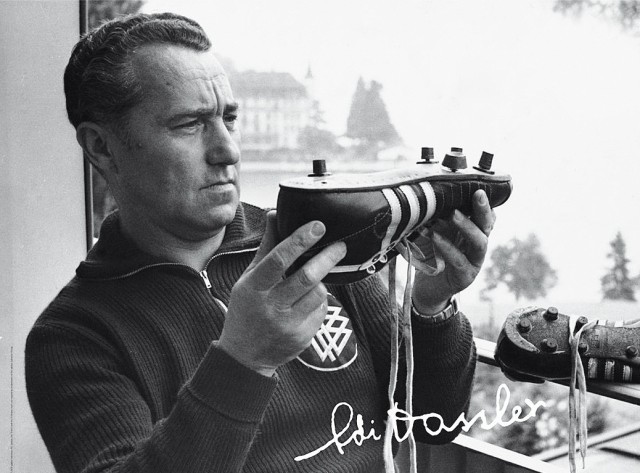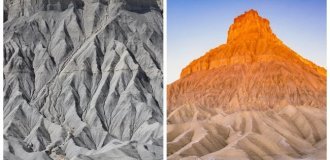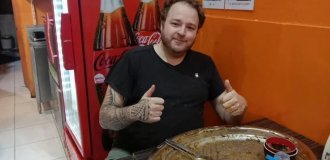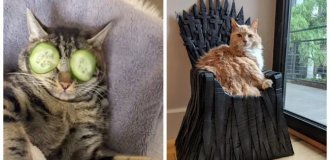Brand confrontation: Adidas vs. Puma (12 photos)
War is not always destruction when it comes to business.
"The Big Break"
But during World War II, the brothers found themselves on opposite sides of the barricades and became sworn enemies. They could no longer work together. Moreover, their wives also added fuel to the fire, who, to put it mildly, did not particularly favor each other.
It is no secret that both brothers were convinced Nazis. In 1932, they voted together for the NSDAP, and in May 1933 they joined this party. The cult of a healthy body, inherent in all totalitarian regimes, opened up enormous prospects for the Dassler factory. But the Second World War first forced the brothers to produce military shoes for the needs of the Third Reich, and in 1943, as part of total mobilization, forced Rudolf Dassler to go to the front. True, Rudy never managed to stay in the trenches - he cited imaginary night blindness and remained in the typing bureau, and in 1945 he completely fled from the advancing Red Army and was arrested by the Gestapo for desertion. On his way to the concentration camp, he was liberated by American soldiers, but was soon arrested by the occupation authorities for collaborating with the Gestapo. During his arrest, he learned that his brother Adolf had denounced him.
All the contradictions that ever existed between the brothers came to light. In addition, Rudolf told the American authorities that the initiative to produce shoes for the Third Reich belonged to Adolf and him alone. American soldiers lived freely for a whole year in the Dassler family mansion, and the factory was obliged to produce and send hockey skates to the United States.
The production of sports shoes was resumed only in 1946, and in 1948 Christoph Dassler, the father of the brothers and the only person who was an obstacle to quarreling to smithereens and dividing the company, died.
So in one small town, at a distance of several hundred meters from each other, two sports shoe factories that hated each other appeared - Addas and Ruda. And this is not a typo.
Adolf Dassler

The brand war in the modern world is a kind of catalyst for the emergence of something new, interesting, and innovative. In the process of increasing turnover, fighting for consumers and expanding markets, many are fighting: BMW versus Audi, Apple versus Microsoft, Nicon versus Canon, Coca-Cola versus Pepsi, Adidas versus Puma. The example of the latter’s confrontation is generally unique. Since these two world famous brands - both Puma and Adidas - were born as a result of the war between two brothers - Adolf and Rudolf Dassler.

Rudolf Dassler was born on March 26, 1898 in the family of a shoemaker and a washerwoman, becoming the third child in the family. Two years later, his younger brother Adolf was born. Since childhood, the brothers fell in love with sports and for a long time were each other's main rivals. The love of sports and competition among themselves remained their main principles until their death.
And here's what happened next...

"Miracle of Berne"
A few months after his father's death (1948), Rudolph abandoned the use of his own name in the company name and changed it to Puma. And Adi decided to simply insert another letter and glue another strip to the two that were applied to the products that he and his brother produced together. Meanwhile, the enmity between them spreads to the entire town of Herzogenaurach - the city's residents are literally split into two camps. In the same 1948, Puma released its first football boots ATOM, and in 1952 its first boots with removable studs - SUPER ATOM, which won the recognition of football players. In 1958, the Swedish and Brazilian national teams wore Puma shoes at the FIFA World Cup.
But the brothers’ ambitions extended much further than a small town on Bavarian soil. The Dasslers re-establish contacts with sports and Olympic committees of different countries, disrupted by the war. The constant desire to outdo each other leads to the fact that there simply cannot be better shoes in the world than those produced by Adidas and Puma. And in 1952, the Dasslers made a big leap forward (let's not argue about which brother did it first) and provided several West German football league teams with new boots with replaceable studs. But for the 1954 FIFA World Cup, it was Adi Dassler who managed to agree with the German national team on the supply of innovative shoes. And, as it turned out, to occupy a much larger place in history than Rudy.

In the final match of that World Cup, the Germans faced the “Golden Team” of the Hungarian national team with the great Ferenc Puskás. At the group stage, the Hungarians defeated the West German team with a score of 8:3 and few doubted that the fate of the title was already sealed. The first half ended with the score 2:2. In the second half, it began to rain heavily and Adolf Dassler immediately made sure that his players changed their wet boots to new ones with longer spikes. The players of the German national team gained a clear advantage in maneuverability and combat, and in the 84th minute of the match, Helmut Rahn scored the winning goal. The match went down in history as the “Miracle of Berne”
Inspired by this victory, Adi is thinking about placing advertising directly in stadiums. In 1956, he signed an agreement with the Olympic Committee to advertise Adidas at the Olympic Games in Melbourne. The advantage of his younger brother becomes undeniable, but Rudolf was not going to give up. In 1958, the victory at the World Cup was already celebrated by Puma, which supplied equipment to the Brazilian national team, and Rudy took advantage of the moment and filed a lawsuit against the advertising slogan “Adidas - the best sports shoes in the world!” And he won the case.
Adolf Dassler attaching studs to Adidas boots, 1954

"Pelé Pact"
Despite all the hostility between the brothers, in order to avoid a sharp rise in prices for advertising market services, the sons of Rudolf and Adolf - Armin and Horst - entered into an agreement: not to sign any contracts with the best football player in the world. But concluding an agreement does not mean keeping it. Both brothers had extensive interests in South America. In 1970, a few months before the start of the next World Cup,
Armin Dassler hires an agent in Rio de Janeiro to convince as many South American footballers as possible that they will play twice as good in Puma boots. The king of football found himself in a difficult situation: Puma launched an aggressive marketing operation, but did not even try to contact him. After listening to Pele's complaints, an agent named Hans Genningsen decided to take a risk and nevertheless presented a draft contract with the main Brazilian star to Armin Dassler.
Puma paid the Brazilian to start tying his shoelaces just before the start of the match, right in the center circle, so that everyone could see that the King was wearing their shoes.
It is not difficult to imagine what happened to Horst Dassler when he learned about the contract with Pele. The war of the fathers grew into the war of the sons.

For playing in the shoes of Rudolf Dassler's company, Pele received good money for those times - $120,000. In recent years, Adidas representatives have noted two major events in the company's activities that contributed to an increase in revenue - the 2006 World Cup in Germany, as well as the signing of a sponsorship agreement with Chelsea in London. At the last World Cup, Puma was represented by 12 teams. Adidas - only 6. However, two Adidas teams reached the semifinals, and it could have been more, since the national teams of Argentina and Germany (who have long-term contracts with Adidas) met in the quarterfinals. As everyone remembers, the Adidas French team lost the final to the Italians in Puma.
Adidas did not turn the defeat into a tragedy, but, on the contrary, joked that the episode with Zidane and Materazzi could well be used as an advertisement - a crushing head blow to the chest, an opponent on the lawn, a close-up of the brutal Frenchman, who has the magic six on his T-shirt letters - A d i d a s. Among other notable facts of the World Cup, it is curious that 37.5 percent of the players of the main squads of all national teams played in boots from the Adolf Dassler company. Balls from a concern called Teamgeist have sold as many as 15 million copies.
We were also pleased with the sales of Adidas Predator boots (1 million pairs) and national team jerseys (3 million). Adidas is one of the leaders in the football market today. The company dresses the giants - Bayern Munich (for 35 years), Real Madrid, Milan, Liverpool, Chelsea and Ajax Amsterdam. As for Puma, it has made a qualitative step forward in club football in recent years, but cannot yet compete with its long-time rivals, as well as with Nike.
Rudolf Dassler (left) and Adolf Dassler (right) with the then German Sports Minister

In 1972, another Adidas symbol appeared - the Trefoil, which symbolizes the unity of the Olympic spirit on three continents.
In 1972, the German national team won the European Football Championship, and at the Munich Olympic Games, Adidas became the title sponsor. The USSR national team chooses Adidas for Olympic equipment.
In 1974, football players from Germany, including Franz Beckenbauer, again chose Adidas and won the World Cup for the second time. In the final they beat Holland with a score of 2:1. In 1975, Adi Dassler became the first non-American to be elected an honorary member of the American Sporting Goods Association.
At the 1976 Montreal Olympics, about 83% of athletes choose equipment from Adidas. They become the owners of 75 gold, 86 silver and 88 bronze medals. At the same games, an interesting incident happened: Adi Dassler was watching the preliminary 400-meter race and noticed that Cuban Alberto Juantorena was slightly bending his foot towards its outer edge while running. The athlete was wearing Adidas “Spikes” sneakers with adjustable, removable spikes. Dassler immediately called his assistant, who worked at the Olympics, and told him to inspect the athlete’s shoes.
It turned out that Alberto arbitrarily replaced the short spikes with longer ones, but no one except the shoe creator noticed this. As a result, the position of the spikes was corrected, and Juantorena, nicknamed “The Horse,” became the winner in the 400 and 800 meter races. At the Montreal Games, athletes wearing Adidas set a record; they took away 75 gold, 86 silver and 88 bronze medals, an achievement that has not yet been broken. All these years, Adidas was a closed private company, personally led by Adi Dassler.
Sons of Adolf and Rudolf Dassler

Let's move on to Puma. 1968 becomes a landmark year for PUMA. This year, Puma signs a contract with the successful basketball player of that time, Walter Frazier, and creates a personalized series of products for him. Athletes wearing Puma shoes win four gold medals at the Mexico City Olympics. And finally, sports shoes with Velcro fastenings, a new technology developed by the company, are entering the market for the first time.
At the 1972 Olympic Games in Munich, athletes wearing Puma equipment won four gold medals. Among them were: John Akii-Buah (400m hurdles), Mary Peters (pentathlon), Klaus Wolfermann (javelin) and Randy Williams (long jump).
End of story
Rudolf Dassler died in 1974 at the age of 76 from lung cancer. There are rumors that in the early 70s the brothers secretly met several times, but Adolf did not come to his brother’s funeral, limiting himself to a telephone conversation with the priest in which he said that he forgives his brother. And Adidas issued an official release regarding the death of Rudolf, which contained the following: “The family of Adolf Dassler would not like to make any comments regarding the death of Rudolf Dassler.” Four years later, Adi himself passed away.
Today Adolf Dassler can be seen looking out onto the pitch of the stadium named after him. On the second row, among the fans.

The confrontation between the companies continued until the heirs of Adolf Dassler quarreled among themselves and sold the company with an annual turnover of more than half a billion dollars for 390 million.
In 1990, Adidas' losses already amounted to $100 million. At the same time, young people preferred new brands such as Nike and Reebok. Additionally, at the time, most Adidas products were manufactured in Germany, which contributed to high costs. Nike and Reebok created their products in factories in Thailand and China. It was necessary to urgently correct the situation. Adidas was still a very famous brand, and just letting it die would be very stupid.
At the very beginning of the 90s, many talented managers from Nike moved to Adidas. How did this happen? It’s hard to say, perhaps the former fame of Adidas contributed to this, or maybe just higher salaries (but where from). But the fact remains that Adidas had the best managers of its competitor at its disposal, and they began to correct the situation. Production slowly began to flow to countries where wages were significantly lower than in Europe. Then, Adidas products almost completely disappeared from the retail trade, after which the company's branded stores were opened all over the world.
In 1996, Adidas became the main sponsor of the Olympic Games. After this event, sales of Adidas-branded products increased by 50%. Of course, Adidas' main audience was in Europe. But after the Olympics, the company’s share in the US market also increased and amounted to 12%. (We are talking about sports shoes) In addition, in order to bring young people closer to itself, Adidas began to actively promote new sports that are especially popular among young people. This includes street ball, snowboarding, as well as other extreme sports events known to a narrow circle of people.

In 1997, Adidas bought the French company Salomon, a leading manufacturer of winter sports products, and now the concern is called Adidas-Salomon Joint Stock Company. After this merger, Adidas-Salomon became the second largest manufacturer of sporting goods after Nike. These 2 companies are still fighting for first place with varying degrees of success.
In 2005, Adidas – Salomon AG bought 100% of the shares of Reebok, thereby significantly strengthening its position in the market.

In the early 1990s, Puma, like Adidas, was going through a period of crisis. There are accusations from consumers that the company has outlived its usefulness and that it is imitating other well-known brands. The situation is saved by the new CEO of the company, Johan Seitz, who sets the task of creating a bright and unique style for the company. He wants to transform Puma into the most desirable brand, successfully combining ideas from the worlds of sports, lifestyle and fashion. Now the company is introducing a new segment – sportlifestile.
Puma begins collaborating with fashion designers and produces limited edition clothing, accessories and shoes. The company's focus is changing, moving away from sports in general and producing clothing for specific sports and active lifestyles. In 1990, Puma launched children's shoes and thereby opened up a new market segment. Shoes are created using the new Inspector technology, which allows you to control whether the shoe size matches the child’s foot.
In 1991, Puma introduced the latest technology, the Puma Disc Sistem, and also began collaborating with the UK-based company Pittards, a leader in the production of exclusive leathers. This collaboration results in the creation of a new type of leather that is particularly water-resistant, called Pittards Soccer 2000. This leather was used exclusively in the production of Puma King shoes. It was in these shoes that the Czech football team reached the final of the World Cup.
You probably remember and know the modern history of both brands well.






















